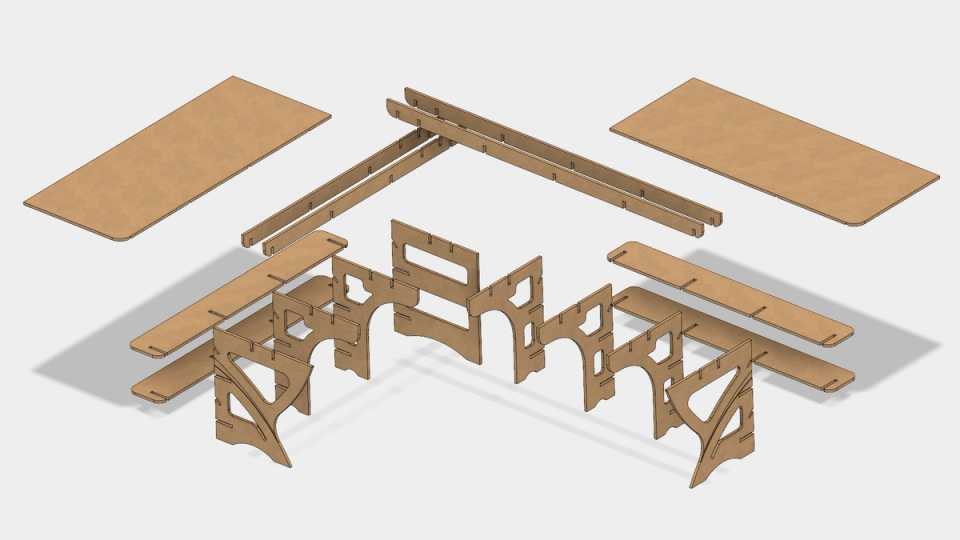
Flat-pack corner table for CNC routers
Motivated by a desire for a more mobile, yet practical lifestyle, I designed and built this flat-pack style corner table for my apartment that requires no fasteners or glue, assembles and disassembles in minutes and can be transported easier than a normal desk.
The table uses interlocking legs, shelves and spines that fit together with slot joints. I designed it in Fusion 360 and used Fusion's built-in CAM workspace to create toolpaths for a CNC router. Finally I cut all the parts out of 3/4" birch plywood on my local hackerspace's 4x4' CNC router.
By sharing all the design files for this project publicly, anyone with experience in Fusion 360 and CNC routing could make a table for themselves. In fact, at least one person did - check out the video at the end of this post!
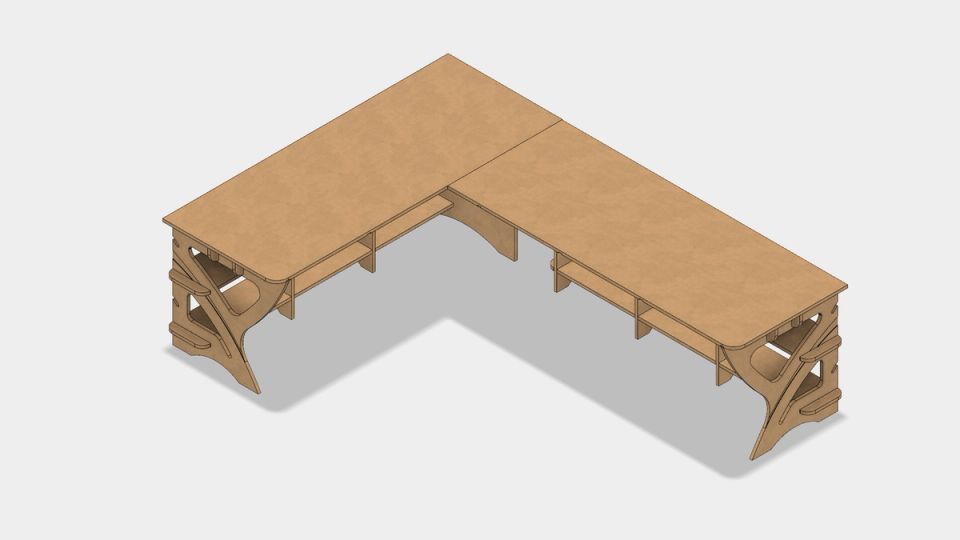


Fabrication
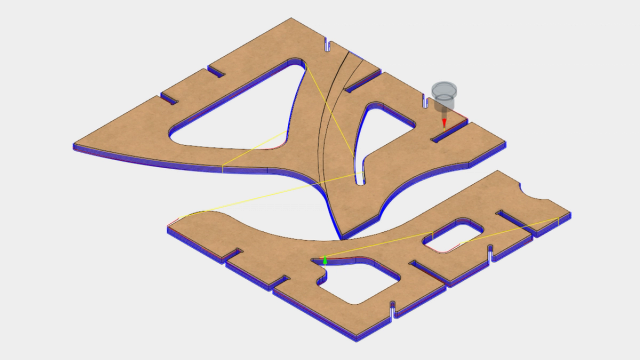

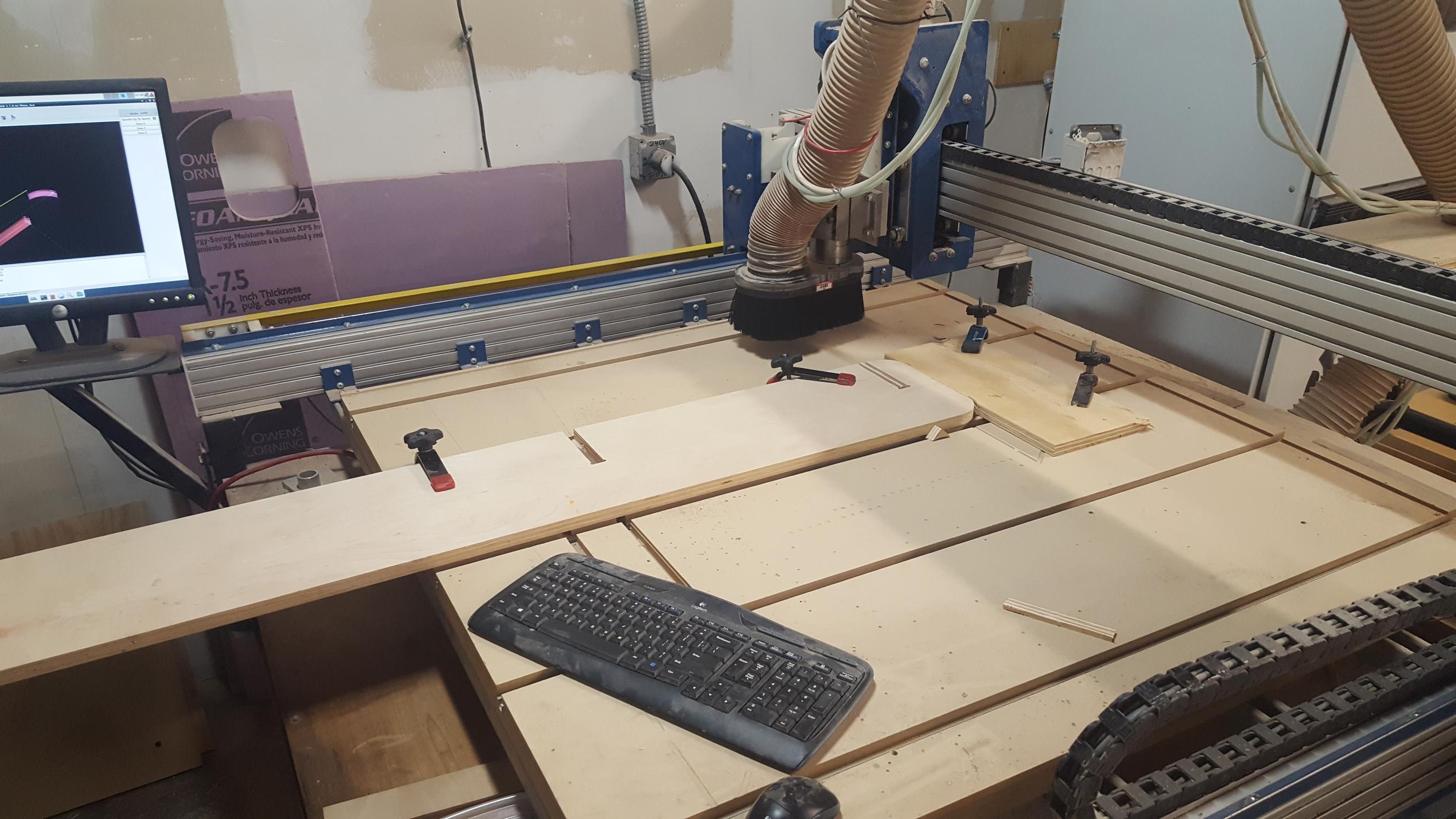

Assembly
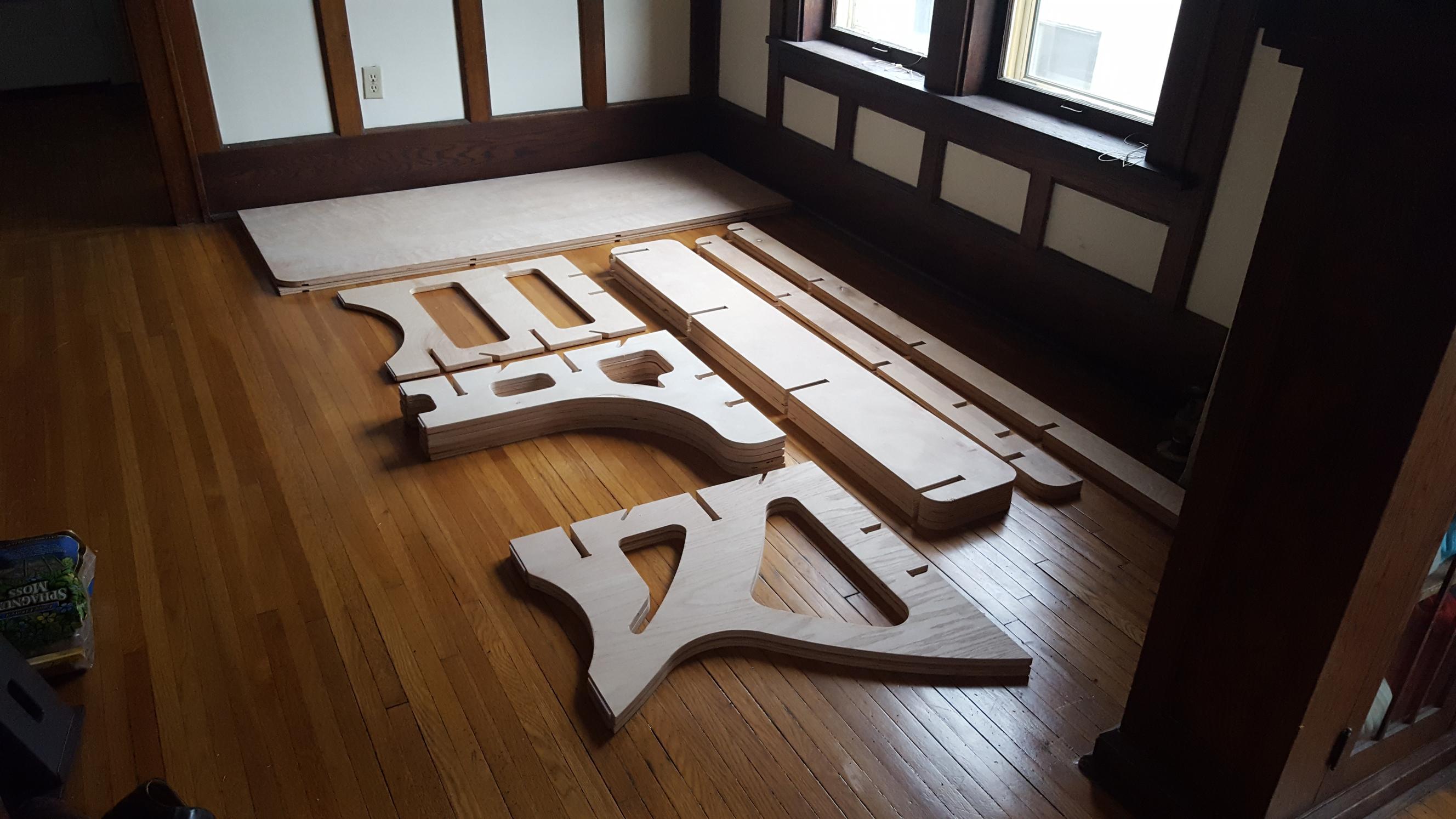
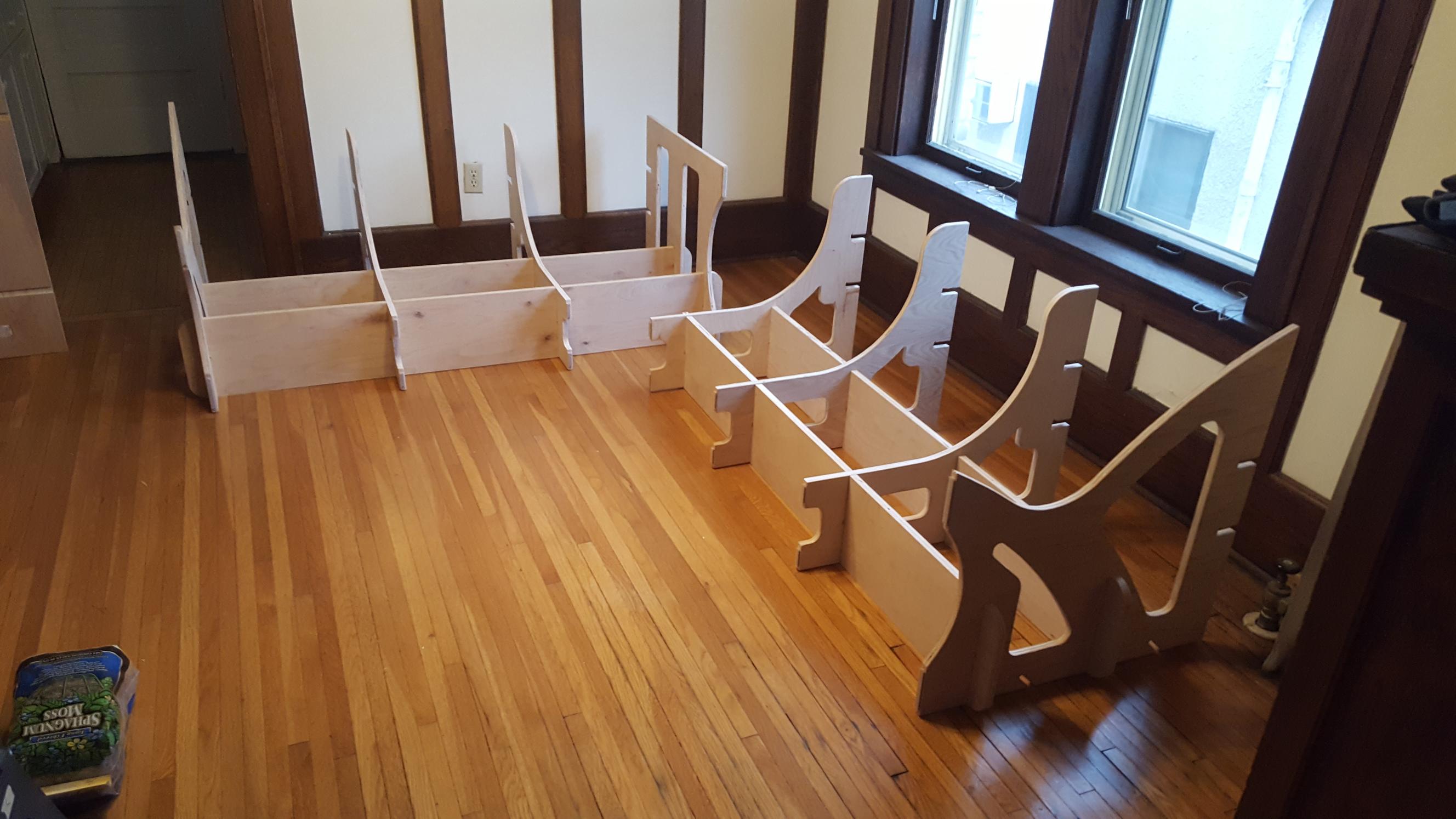
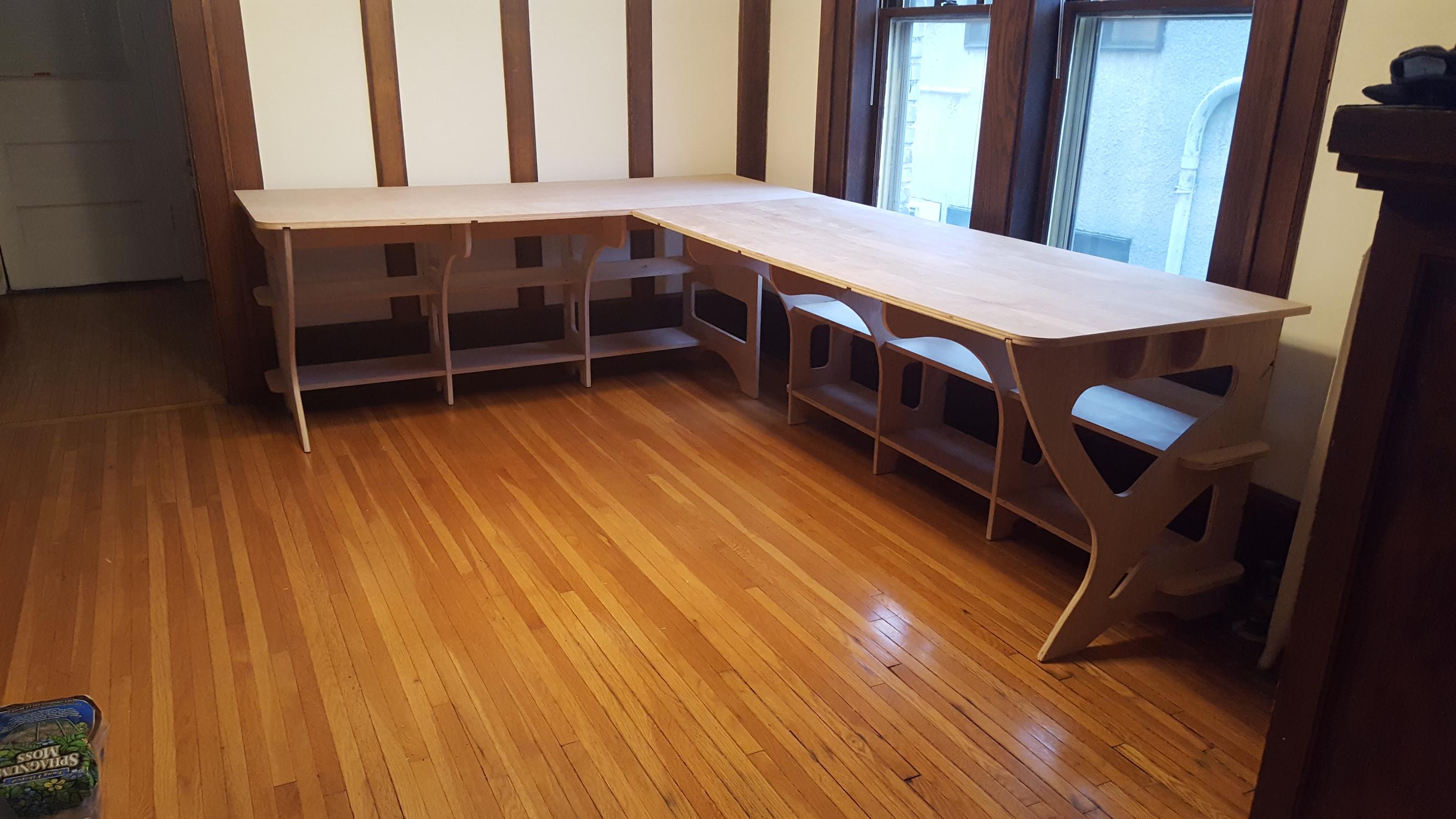
Someone who goes by the name @Nputaansuu on YouTube made his own desk using the design files I shared, and posted this build log video.